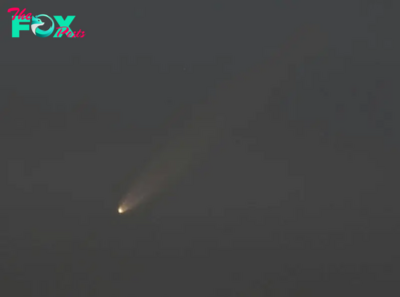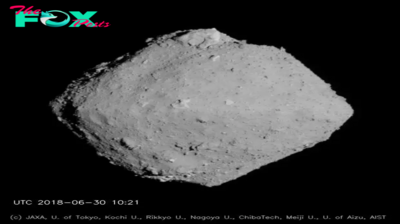Science
Collapse of Earth's magnetic field may have fueled evolution of life 600 million years ago
A near collapse of Earth's magnetic field may have paved the way for life to evolve past the microscopic stage.
New research on ancient rocks from South Africa and Brazil suggests that Earth's magnetic field underwent a major weakening about 591 million years ago. This corresponds to a time period called the Ediacaran (about 635 million to 541 million years ago), when both the atmosphere and the oceans may have become more oxygen-rich and living things evolved to be larger and more mobile than previous life-forms. The new findings suggest that the weakening of the magnetic field enabled this oxygen boost, which, in turn, led to a new phase of evolution.
"If we're right, this is a pretty profound event in evolution," study leader John Tarduno, a planetary scientist at the University of Rochester in New York, told Live Science.
The findings could have implications for how life might arise on other planets, Tarduno added, and highlights the way that the geology of the deep Earth iNFLuences the atmosphere and surface.
Earth's magnetic field is driven by the movements of the planet's iron-rich core. Today, the field owes its strength to the churn of the outer liquid core, which is driven by heat released from the solid inner core as it crystallizes at the rate of about a millimeter per year.
Related: What if Earth's magnetic field disappeared?
Before the inner core solidified, though, Earth already had a magnetic field, which was driven by the churn of the entirely liquid core releasing heat to the mantle, or middle layer. Over time, as the core cooled and the temperature difference between the mantle and the core shrank, this heat release became less and less efficient, reducing the churn and thus weakening the magnetic field.
-

 Science20h ago
Science20h agoWhy Risky Wildfire Zones Have Been Increasing Around the World
-

 Science1d ago
Science1d agoIt’s Time to Redefine What a Megafire Is in the Climate Change Era
-

 Science2d ago
Science2d ago4 Astronauts Return to Earth After Being Delayed by Boeing’s Capsule Trouble and Hurricane Milton
-

 Science3d ago
Science3d agoThe Elegance and Awkwardness of NASA’s New Moon Suit, Designed by Axiom and Prada
-

 Science1w ago
Science1w agoSpaceX Launches Its Mega Starship Rocket. This Time, Mechanical Arms Catch It at Landing
-

 Science3w ago
Science3w agoYou Won’t Want to Miss October’s Rare Comet Sighting. Here’s How and When You Can See It
-

 Science1m ago
Science1m agoA New Spacecraft Could Help Determine if There’s Life on a Moon of Jupiter
-

 Science1m ago
Science1m agoWe Can Thank Deep-Space Asteroids for Helping Start Life on Earth



























